Early references to Heralds in French medieval literature seem to suggest that they share a common ancestry with the minstrels, storytellers and messengers in the households of the nobility. Other 12th and 13th century writers refer to freelance individuals who followed the newly popular sport of Tournament Jousting or “ Tourneying” across Europe, employed to cry out the names of knights and recount their lineage and acts of prowess. The term “herald” seems to have its origins in the Old German word beerwald, meaning a caller or proclaimer to the army. Heralds became interested in matters armorial as at tournaments and in battle they needed to recognize and memorize the Coats of Arms of the participants. For the purpose of recalling and tabulating the different Arms of the nobility the heralds compiled the first registries if Coats of Arms which came to be known as Heraldic Rolls. The Rolls of Arms were initially rolls of vellum paper or parchment and over time were transferred to books but were still referred to as rolls.
In the early 1300’s heralds were attached to noble households, where they were employed as messengers, proclaiming challenges for upcoming tournaments on their master’s behalf. It seems that the herald was allowed to travel for some length of time to collect information on the tournament on the potential opponents that his master might meet at such tournaments. The Herald would also advise the noble on all matters related to chivalry because if his lord wanted to be seen as a man of knowledge and high-birth he was expected to be well acquainted with such matters. Originally the freelance heralds had taken their titles at will, but as they became accredited to certain noble households they took their official names from their masters’ own titles or badges, or from charges that appeared on the masters’ Coats of Arms. “The Golden Fleece” ( Toison d’or) was the Herald of the order from Burgundy in France that bore that name. Montjoie took his name from the cri-de-guerre of the French Kings; “Mont joie de Saint Denis”, and the name Blanch Sanglier ( “White boar”) came form the personal badge of Richard Duke of Gloucester, later King Richard III. Heralds themselves do not normally figure on the family Coat of Arms, but one notable exception is for the Spanish family of de Armas, which descends from the Herald Juan Negrin, king of Arms to the kings of Castille. They bear on the shield an arm holding a banner charged with the Arms of the kingdoms of Castile and Leon. Early references to the Herald were not always complimentary, sometimes written by minstrels who saw the Heralds as a threat to their position of power within the noble household. They often vied with each other for their masters’ attention. One poet from the late 13th century, Henri de Laon, thought that the Herald pursued an idle profession, one worthy only of greedy men
In the early 1300’s heralds were attached to noble households, where they were employed as messengers, proclaiming challenges for upcoming tournaments on their master’s behalf. It seems that the herald was allowed to travel for some length of time to collect information on the tournament on the potential opponents that his master might meet at such tournaments. The Herald would also advise the noble on all matters related to chivalry because if his lord wanted to be seen as a man of knowledge and high-birth he was expected to be well acquainted with such matters. Originally the freelance heralds had taken their titles at will, but as they became accredited to certain noble households they took their official names from their masters’ own titles or badges, or from charges that appeared on the masters’ Coats of Arms. “The Golden Fleece” ( Toison d’or) was the Herald of the order from Burgundy in France that bore that name. Montjoie took his name from the cri-de-guerre of the French Kings; “Mont joie de Saint Denis”, and the name Blanch Sanglier ( “White boar”) came form the personal badge of Richard Duke of Gloucester, later King Richard III. Heralds themselves do not normally figure on the family Coat of Arms, but one notable exception is for the Spanish family of de Armas, which descends from the Herald Juan Negrin, king of Arms to the kings of Castille. They bear on the shield an arm holding a banner charged with the Arms of the kingdoms of Castile and Leon. Early references to the Herald were not always complimentary, sometimes written by minstrels who saw the Heralds as a threat to their position of power within the noble household. They often vied with each other for their masters’ attention. One poet from the late 13th century, Henri de Laon, thought that the Herald pursued an idle profession, one worthy only of greedy men
“ What’s more, lords would give shelter to up to four of these ne’er-do-wells who tended to talk more than good folk of other callings, yet at the same time do very little”

THE GOLDEN FLEECE

